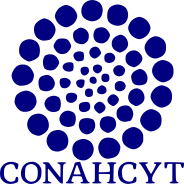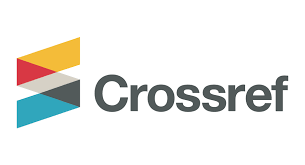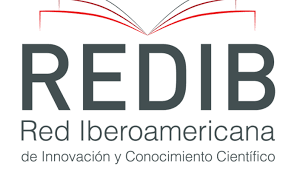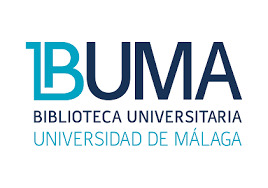Riqueza y composición de líquenes de los pueblos mágicos de Cuetzalan y Tlatlauquitepec, Puebla, México
DOI:
https://doi.org/10.18387/polibotanica.58.3Palabras clave:
Extirpación, formas de crecimiento, mesodiverso, monoespecífico, riqueza, fragmentosResumen
Más allá de la riqueza cultural e histórica que identifica a Cuetzalan y Tlatlauquitepec, está la diversidad biológica que alberga. El tipo de vegetación dominante es el bosque mesófilo de montaña, el cual se encuentra en riesgo de desaparecer debido a la transformación exacerbada de la zona; provocando la extirpación de las especies que ahí habitan, tales como helechos, licopodios y líquenes. El objetivo de este estudio fue conocer la riqueza liquénica en fragmentos de bosque mesófilo de montaña. Se reportan 108 especies de líquenes en 53 géneros; 64 especies correspondieron a macrolíquenes en 16 géneros y 44 a microlíquenes en 31 géneros. El género Parmotrema fue mesodiverso al presentar 23 especies, mientras que 34 géneros fueron monoespecíficos al presentar una sola especie, tal es el caso de Bacidia, Baeomyces, Bulbothrix, Dermatocarpon, y Teloschistes. Se reporta a Allographa chlorocarpa y A. rufopallida como nuevos registros para el estado de Puebla. Es importante continuar con estos estudios taxonómicos considerando las formas de crecimiento como una estrategia que permita el reconocimiento de áreas importantes para la conservación de los ecosistemas, como los bosques mesófilos de montaña, los cuales actualmente se encuentran seriamente comprometidos.
Referencias
Allgaier, C. (2007). Active camouflage with lichens in a terrestrial snail, Napaeus (N.) barquini Alonso and Ibáñez, 2006 (Gastropoda, Pulmonata, Enidae). Zoological Science, 24(9), 869–876. https://doi.org/10.2108/zsj.24.869
Aragón, G., Belinchón, R., Martínez, I., & Prieto, M. (2016). A survey method for assessing the richness of epiphytic lichens using growth forms. Ecological Indicators, 62, 101–105. https://doi.org/10.1016/j.ecolind.2015.11.034
Aragón, G., Martínez, I., Hurtado, P., Benítez, Á., Rodríguez, C., & Prieto, M. (2019). Using growth forms to predict epiphytic lichen abundance in a wide variety of forest types. Diversity, 11(4). https://doi.org/10.3390/d11040051
Bergamini, A., Scheidegger, C., Stofer, S., Carvalho, P., Davey, S., Dietrich, M., Dubs, F., Farkas, E., Groner, U., Kärkkäinen, K., Keller, C., Lökös, L., Lommi, S., Máguas, C., Mitchell, R., Pinho, P., Rico, V. J., Aragón, G., Truscott, A.-M., … Watt, A. (2005). Performance of macrolichens and lichen genera as indicators of lichen species richness and composition. Conservation Biology, 19(4), 1051–1062. https://doi.org/10.1111/j.1523-1739.2005.00192.x-i1
Bergamini, A., Stofer, S., Bolliger, J., & Scheidegger, C. (2007). Evaluating macrolichens and environmental variables as predictors of the diversity of epiphytic microlichens. The Lichenologist, 39(5), 475–489. https://doi.org/10.3929/ethz-b-000059026
Brodo, I. M. (2016). Keys to Lichens of North America: Revised and Expanded. New Haven and London: Yale University Press.
Brodo, I. M., Duran Sharnoff, S., & Sharnoff, S. (2001). Lichens of North America. Yale University Press. https://books.google.com.mx/books?id=YyS-hS15Ty4C
Cáceres, M. E. da Silva. (2007). Corticolous crustose and microfoliose lichens of Northeastern Brazil. IHW-Verlag.
Castillo-Campos, G., Pérez-Pérez, R. E., Córdova-Chávez, O., García-Franco, J. G., & Cáceres, M. E. da S. (2019). Vertical distribution of epiphytic lichens on Quercus laurina Humb. & Bonpl. in a remnant of cloud forest in the state of Veracruz, México. Nordic Journal of Botany, 37(12). https://doi.org/10.1111/njb.02459
Cerón-Carpio, A. B. (2011). Diversidad de especies: pteridofitas (helechos y grupos afines). En Comisión Nacional para el Conocimiento y Uso de la Biodiversidad (CONABIO) (Ed.), La Biodiversidad en Puebla: Estudio de Estado (pp. 127–132). Comisión Nacional para el Conocimiento y Uso de la Biodiversidad, Gobierno de Estado de Puebla, Benemérita Universidad Autónoma de Puebla.
Cerón-Carpio, A. B., Arreguín-Sánchez, Ma. de la L., & Fernández-Nava, R. (2006). Listado con anotaciones de las pteridofitas del municipio de Tlatlauquitepec, Puebla, México, y distribución de las especies en los diferentes tipos de vegetación. POLIBOTÁNICA, 21, 45–60.
Chatellenaz, M. L., & Ferraro, L. I. (2000). Materiales vegetales y fúngicos utilizados por aves en la construcción de nidos en el Noreste Argentino y Paraguay. Comunicaciones Científicas y Tecnológicas, 5.
CONABIO. (2010). El Bosque Mesófilo de Montaña en México: Amenazas y Oportunidades para su Conservación y Manejo Sostenible. Comisión Nacional para el Conocimiento y Uso de la Biodiversidad.
CONABIO. (2011). La Biodiversidad en Puebla: Estudio de Estado. México. Comisión Nacional para el Conocimiento y Uso de la Biodiversidad, Gobierno del Estado de Puebla, Benemérita Universidad Autónoma de Puebla.
Cordova, J., & Del Castillo, R. F. (2001). Changes in epiphyte cover in three chronosequences in a Tropical Montane Cloud Forest in Mexico. En G. Gottsberger & S. Liede (Eds.), Life forms and dynamics in Tropical Forest, Dissertations Botanical (pp. 79–94). J. Cramer.
Córdova-Chávez, O., Aptroot, A., Castillo-Camposa, G., Cáceres, M. E. da S., & Pérez-Pérez, R. E. R. E. (2014). Three new lichen species from cloud forest in Veracruz, Mexico. Cryptogamie, Mycologie, 35(2), 157–162. https://doi.org/10.7872/crym.v35.iss2.2014.157
Córdova-Chávez, O., Castillo-Campos, G., Pérez-Pérez, R. E., García-Franco, J. G., & Cáceres, M. E. da S. (2016). Alpha diversity of lichens associated with Quercus laurina in a mountain Cloud Forest at Cofre de Perote Eastern Slope (La Cortadura), Veracruz, Mexico. Cryptogamie, Mycologie, 37(2), 193–204. https://doi.org/10.7872/crym/v37.iss2.2016.193
Culberson, C. F., & Kristinsson, H.-D. (1970). A standardized method for the identification of lichen products. Journal of Chromatography , 46, 85–93.
Diario Oficial de la Federación (DOF). (2020). Acuerdo por el que se establecen los criterios generales para el Nombramiento de Pueblos Mágicos. https://www.dof.gob.mx/nota_detalle.php?codigo=5588815&fecha=10/03/2020#gsc.tab=0
Dyer, L. A., & Letourneau, D. K. (2007). Determinants of lichen diversity in a rain forest understory. Biotropica, 39(4), 525–529. https://doi.org/10.1111/j.1744-7429.2007.00300.x
Elkhateeb, W., El-Ghwas, D., & Daba, G. (2022). Lichens uses: Surprising uses of lichens that improve human life. Journal of Biomedical Research & Environmental Sciences, 3(2), 189–194. https://doi.org/10.37871/jbres1420
García Castro, P. E., Gatica Barrientos, M. L., Cruz Sosa, E. R., Vargas Hernández, R. del R., Hernández García, J., Luis Gatica, K., de los Santos Morales, S., & Silverio Beristáin, G. (2016). Pueblos mágicos en Puebla y su aportación al desarrollo regional. Revista Iberoamericana de las Ciencas Sociales y Humanísticas, 5(10).
Graves, G. R., & Dal Forno, M. (2018). Persistence of transported lichen at a hummingbird nest site. Northeastern Naturalist, 25(4), N27–N31. https://doi.org/10.1656/045.025.0410
Hawksworth, D. L., Iturriaga, T., & Crespo, A. (2005). Líquenes como bioindicadores inmediatos de contaminación y cambios medio-ambientales en los trópicos. Revista Iberoamericana de Micología, 22(2), 71–82. https://doi.org/10.1016/S1130-1406(05)70013-9
Herrera-Campos, M. A., & Lücking, R. (2009). Líquenes. En A. Lot & Z. Cano Santana (Eds.), Biodiversidad del ecosistema del Pedregal de San Ángel (pp. 81–94). UNAM.
Herrera-Campos, M. A., Lücking, R., Pérez-Pérez, R. E., Campos, Á., Martínez Colín, P., & Bárcenas Peña, A. (2004). The foliicolous lichen flora of Mexico. V. Biogeographical affinities, altitudinal preferences, and an updated checklist of 293 species. The Lichenologist, 36(5), 309–327. https://doi.org/10.1017/S0024282904014483
Herrera-Campos, M. A., Lücking, R., Pérez-Pérez, R. E., Miranda, R., Sánchez, N., Barcenas-Peña, A., Carrizosa, A., Zambrano, A., Ryan, B. D., & Nash III, T. H. (2014). Biodiversidad de líquenes en México. Revista Mexicana de Biodiversidad, 85, 82–99. https://doi.org/10.7550/rmb.37003
Herrera-Campos, M. A., Pérez-Pérez, R. E., & Nash III, T. H. (2016). Lichens of Mexico. The Parmeliaceae - Keys, distribution and specimen descriptions. En Bibliotheca Lichenologica. J. Cramer.
Holt, E. A., Bradford, R., & Garcia, I. (2015). Do lichens show latitudinal patterns of diversity? Fungal Ecology, 15, 63–72. https://doi.org/10.1016/j.funeco.2015.03.004
Ibañez, L. M., García, R. A., Fiorini, V. D., & Montalti, D. (2018). Lichens in the nests of European starling Sturnus vulgaris serve a mate attraction rather than insecticidal function. Turkish Journal of Zoology, 42(3), 316–322. https://doi.org/10.3906/zoo-1710-3
Lõhmus, A., Motiejūnaitė, J., & Lõhmus, P. (2023). Regionally varying habitat relationships in lichens: The concept and evidence with an emphasis on North-Temperate ecosystems. En Journal of Fungi (Vol. 9, Número 3, p. 341). MDPI. https://doi.org/10.3390/jof9030341
Lücking, R. (2008a). Foliicolous lichenized fungi. Published by New York Botanical Garden Press on behalf of Organization for Flora Neotropica. http://www.jstor.org/stable/25660968
Lücking, R. (2008b). Taxonomy: A discipline on the brink of extinction: Are DNA barcode scanners the future of biodiversity research? Archives des Sciences, 61(2), 75–88. https://doi.org/10.5169/seals-738307
Lücking, R., Hodkinson, B. P., & Leavitt, S. D. (2017). The 2016 classification of lichenized fungi in the Ascomycota and Basidiomycota-Approaching one thousand genera. The Bryologist, 119(4), 361–416. https://doi.org/10.1639/0007-2745-119.4.361
Lücking, R., Leavitt, S. D., & Hawksworth, D. L. (2021). Species in lichen-forming fungi: balancing between conceptual and practical considerations, and between phenotype and phylogenomics. En Fungal Diversity (Vol. 109, Número 1, pp. 99–154). Springer Science and Business Media B.V. https://doi.org/10.1007/s13225-021-00477-7
Markham, J., & Fernández Otárola, M. (2021). Bryophyte and lichen biomass and nitrogen fixation in a high elevation cloud forest in Cerro de La Muerte, Costa Rica. Oecologia, 195(2), 489–497. https://doi.org/10.1007/s00442-020-04840-4
Mendoza-Ruiz, A., & Ceja-Romero, J. (2020). New records of lycophytes and ferns for the state of Puebla, Mexico. Acta Botanica Mexicana, 127. https://doi.org/10.21829/ABM127.2020.1637
Moncada, B., Pérez-Pérez, R. E., & Lücking, R. (2019). The lichenized genus Cora (Basidiomycota: Hygrophoraceae) in Mexico: High species richness, multiple colonization events, and high endemism. Plant and Fungal Systematics, 64(2), 393–411. https://doi.org/10.2478/pfs-2019-0026
Mongkolsuk, P., Meesim, S., Poengsungnoen, V., Buaruang, K., Schumm, F., & Kalb, K. (2015). The lichen family Physciaceae in Thailand—II. Contributions to the genus Heterodermia sensu lato. Phytotaxa, 235(1), 001–066. https://doi.org/10.11646/phytotaxa.235.1.1
Nash III, T. H. (2008). Lichen Biology (T. H. Nash III, Ed.; Second). Cambridge University Press.
Pearson, D. L., Hamilton, A. L., & Erwin, T. L. (2011). Recovery plan for the endangered Taxonomy profession. BioScience, 61(1), 58–63. https://doi.org/10.1525/bio.2011.61.1.11
Pérez-Pérez, R. E., Castillo-Campos, G., & Cáceres, M. E. da S. (2015). Diversity of corticolous lichens in cloud forest remnants in la Cortadura, Coatepec, Veracruz, México in relation to phorophytes and habitat Fragmentation. Cryptogamie, Mycologie, 36(1), 79–92. https://doi.org/10.7872/crym.v36.iss1.2015.79
Pérez-Pérez, R. E., & Guzmán, G. (2015). Parmotrema species in a cloud forest region turned into an urban zone in Xalapa, Veracruz, Mexico. Bosque, 36(3), 357–362. https://doi.org/10.4067/S0717-92002015000300003
Purvis, W. (2000). Lichens (1a ed.). Natural History Museum, London / Smithsonian Institution, Washington.
Rivera-Aguilar, V., Montejano, G., Rodríguez-Zaragoza, S., & Durán-Díaz, A. (2006). Distribution and composition of cyanobacteria, mosses and lichens of the biological soil crusts of the Tehuacán Valley, Puebla, México. Journal of Arid Environments, 67(2), 208–225. https://doi.org/10.1016/j.jaridenv.2006.02.013
Robert, V., Stegehuis, G., & Stalpers, J. (2005). MYCOBANK Data. The MycoBank engine and related databases. https://www.MycoBank.org/.
Root, H. T., & Dodson, E. K. (2016). Pssst…pass the algae: succession in lichen soil crusts. Frontiers in Ecology and the Environment, 14(8), 451–452. https://doi.org/10.1002/fee.1419
Rzedowski, J. (1996). Análisis preliminar de la flora vascular de los bosques mesófilos de montaña de México. Acta Botanica Mexicana, 35, 25. https://doi.org/10.21829/abm35.1996.955
Sánchez Girón, X. (2019). Composición de la comunidad liquénica asociada a la selva baja caducifolia de San Pedro Atlixco, San Juan Tianguismanalco, Puebla [Tesis de Licenciatura]. Benemérita Universidad Autónoma de Puebla.
Scheidegger, C., & Werth, S. (2009). Conservation strategies for lichens: insights from population biology. Fungal Biology Reviews, 23(3), 55–66. https://doi.org/10.1016/j.fbr.2009.10.003
Sipman, H. J. M. (1996). Corticolous lichens. En S. R. Gradstein, P. Hietz, R. Lücking, A. Lücking, H. J. M. Sipman, H. F. M. Vester, J. H. D. Wolf, & E. Gardette (Eds.), How to sample epiphytic diversity of tropical rainforest (Vol. 2, pp. 59–72).
Smith, C. W. (1995). Lichens as Indicators of Cloud Forest in Hawai‘i. En L. S. Hamilton, J. O. Juvik, & F. N. Scatena (Eds.), Tropical Montane Cloud Forests. Ecological Studies (Vol. 110, pp. 309–314). Springer, New York, NY. https://doi.org/10.1007/978-1-4612-2500-3_22
Soofi, M., Sharma, S., Safaei-Mahroo, B., Sohrabi, M., Ghorbani Organli, M., & Waltert, M. (2022). Lichens and animal camouflage: some observations from central Asian ecoregions. Journal of Threatened Taxa, 14(2), 20672–20676. https://doi.org/10.11609/jott.7558.14.2.20672-20676
Spribille, T., Tuovinen, V., Resl, P., Vanderpool, D., Wolinski, H., Aime, M. C., Schneider, K., Stabentheiner, E., Toome-Heller, M., Thor, G., Mayrhofer, H., Johannesson, H., & McCutcheon, J. P. (2016). Basidiomycete yeasts in the cortex of ascomycete macrolichens. Science, 353(6298), 488–492. https://doi.org/10.1126/science.aaf8287
UNESCO. (2000). Decision time for cloud forests. Water-related issues and problems of the humid tropics and other warm humid regions. IHP Humid Tropics Programme Series no. 13.
Descargas
Publicado
Número
Sección
Licencia

Polibotánica por Departamento de Botánica de la Escuela Nacional de Ciencias Biológicas del Instituto Politécnico Nacional se distribuye bajo una Licencia Creative Commons Atribución-NoComercial-CompartirIgual 4.0 Internacional.




















